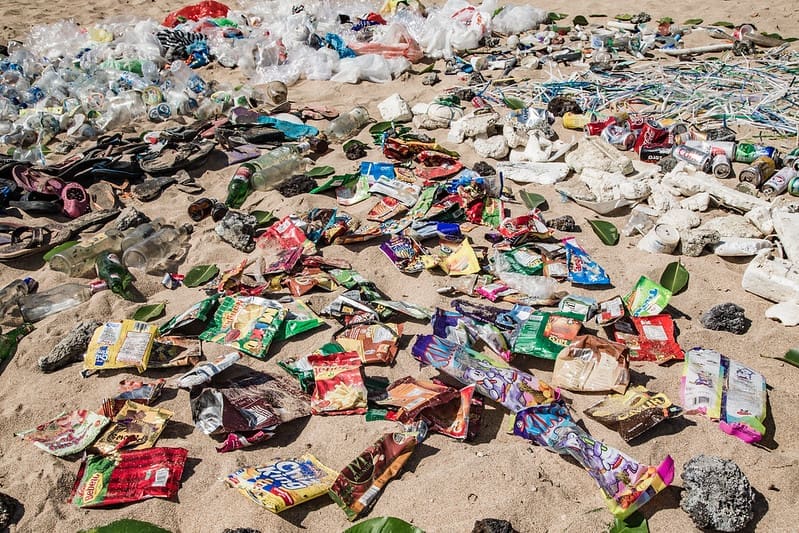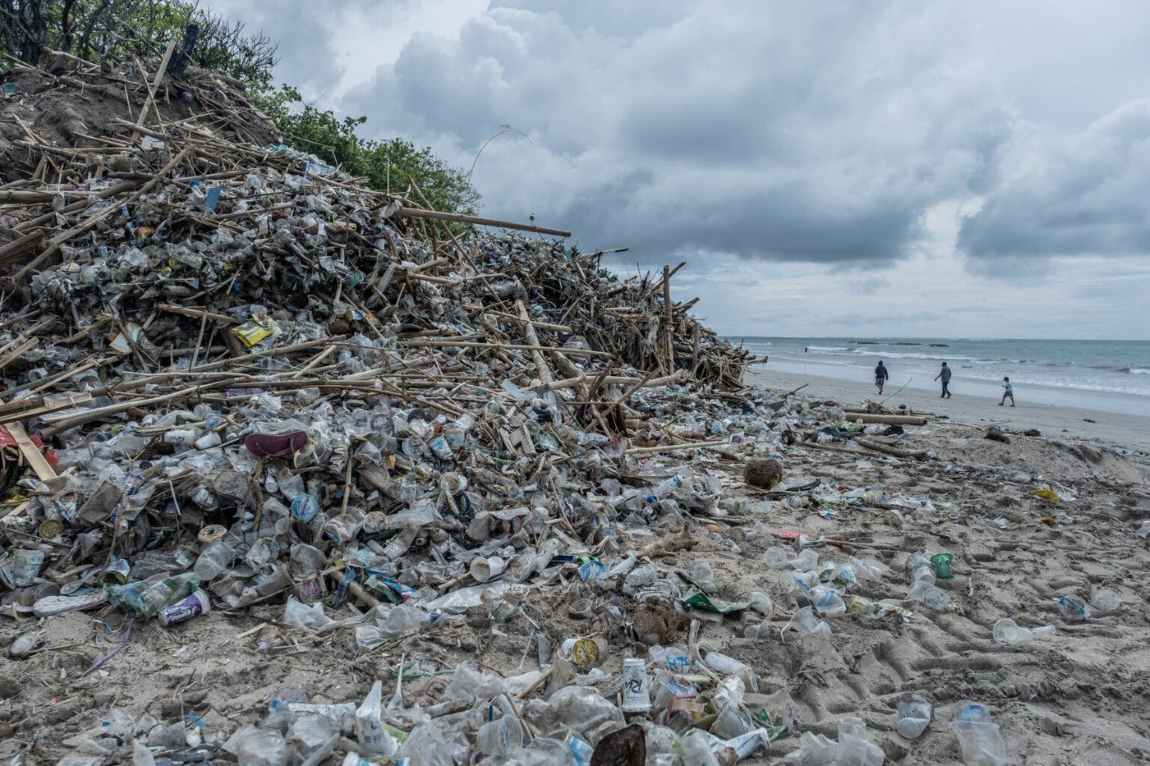Bali is cleaning up its ocean of plastics.
Bali has a unique opportunity to address plastic waste by integrating sustainable practices into the tourism experience. As a top global destination, tourists are likely to follow local customs and practices, especially if eco-friendly systems are in place.
By promoting alternatives to single-use plastic and enhancing waste management infrastructure, Bali can set an example for sustainable tourism. As a priority tourism destination, Bali is also at the forefront of Indonesia’s efforts to promote sustainable tourism.
With national attention on the island’s environmental impact, there is a growing push to implement policies and partnerships that reduce plastic waste, ensuring Bali remains a model of eco-friendly tourism and preserves its natural beauty for future generations.
The Bali Provincial Government has been progressively developing various strategies and policies to implement sustainable tourism areas. Such policies cover reducing single-use plastic waste all the way to protecting lakes, springs, rivers, and the sea.
The province of Bali is also actively engaging in education efforts at various levels through media such as television, radio and online campaigns. To reduce plastic waste in Bali, several trash racks have been installed to collect waste from rivers near estuaries, aiming to prevent plastic waste from reaching the sea. The government of Bali is also actively collaborating with the recycling industry to promote plastic waste recycling.
Littering is a challenge for waste management in Indonesia. Combatting this habit does require effort to increase public awareness from an early age, that the type of waste produced has different characteristics from the type of waste produced by previous generations.
The probability of plastic waste leaking into the sea will be greater if the waste is thrown into water bodies, rivers or drainage channels. Waste that is thrown on land/yards can also reach water bodies with the help of wind and water runoff.
In 2021, a study showed that Indonesia is the fifth largest contributor of marine waste in the world. The World Bank states that specifically in Indonesia, plastic leakage into the ocean ranges from 201,000 to 552,300 tonnes per year, and most of the transport of plastic waste is through rivers.
Plastic waste enters river systems through natural transport mechanisms or direct discharge as a result of inadequate waste management or inappropriate community behaviour.
Once plastic enters rivers, hydrological parameters such as water level, flow velocity, and discharge will impact plastic transport. It is generally thought that all plastic found in rivers will end up in the ocean. However, 99 percent of plastic pollution is never found floating in seawater and is therefore considered “lost”. Another study has shown that this plastic sinks below the water surface.
A model to predict plastics pollution in Indonesia
Indonesia, with its large population and extensive coastlines, faces an enormous challenge in managing plastic waste, making it one of the world’s top contributors to marine plastic pollution. Four rivers — the Brantas, Citarum, Solo, and Progo — are among the 20 most polluted globally, serving as major pathways for plastic leakage.
By 2021, Indonesia ranked as the sixth-largest source of marine plastic pollution, with an estimated 56,333 tonnes of plastic waste entering the ocean through rivers each year. Tackling this critical issue requires an adaptable model that can predict pollution patterns, identify hotspots, and guide targeted solutions.There is a method to track the production, use, and disposal of materials called Material Flow Analysis that helps estimate the volume of plastic waste generated, the proportion mismanaged, and the likelihood of leakage into the environment.
It considers factors like population density, which impacts waste generation, as well as the effectiveness of waste infrastructure such as collection services, landfills, and recycling systems. By analysing practices like recycling rates and landfill capacities, Material Flow Analysis pinpoints regions most vulnerable to plastic leakage. This analysis provides a critical baseline for understanding plastic waste dynamics and identifying hotspots that require immediate attention.

In recent years, Indonesia has generated approximately 10 million tonnes of plastic waste. Meanwhile, the scale of Indonesia’s waste management problem is staggering; only around 40 percent of the population has access to waste collection services, leaving much of the waste either uncollected or mismanaged.
Communities without proper disposal options often resort to dumping waste into rivers or drains. While urban areas generally have better waste management systems, rural regions still rely on open dumping, burning, or direct disposal into waterways.
Java and Sumatra remain the primary contributors to plastic leakage due to their dense populations and strained waste infrastructure, while rural areas in Eastern Indonesia face added challenges from inadequate collection systems.
Eastern Indonesia, while less populated, faces similar problems due to the lack of formal waste management systems. Early findings indicate that over 42 percent of plastic waste is burned, and more than 13 percent is directly dumped into the environment and water bodies. By identifying the plastic debris source’s current condition of plastic leakage in Indonesia and assessing potential interventions, it is hoped the model aligns with Indonesia’s national goal to reduce marine plastic debris by 70 percent by 2025.
Plastic waste reaches waterways and the ocean through several mechanisms. Rainwater runoff carries plastic waste from streets and dumps into rivers, while seasonal flooding can mobilise large volumes of accumulated waste, worsening the issue.
Wind also transports lightweight plastics, such as bags and wrappers, from open dumps into nearby water bodies. In areas lacking proper waste collection, rivers often become dumping sites, further polluting aquatic ecosystems and will end in the marine ecosystem. Hydrological data, including river flow and sedimentation patterns, refine predictions of plastic accumulation and movement within rivers.
Based on the analysis of the plastic waste flow model from terrestrial areas to rivers, it was found that water runoff has the potential to transport approximately 0.31 million tonnes of plastic waste to rivers annually. This amount accounts for around 53 percent of the total plastic that is illegally dumped in the terrestrial environment in Indonesia.
Modelling plastic waste flows in Indonesia presents significant challenges due to inconsistent data, particularly in regions with limited or unreliable waste management records. These inconsistencies stem from variations in reporting standards, local practices, and reliance on assumptions to fill gaps in incomplete or outdated information.
Overcoming these challenges requires thorough validation, including comparisons between model predictions, field measurements, and historical data. Iterative adjustments will enhance the model’s accuracy and reliability, enabling a better understanding of how plastics move from their sources to rivers and beyond.
***
Emenda Sembiring is a professor at the Faculty of Civil and Environmental Engineering in Bandung Institute of Technology (ITB).
Attar Hikmahtiar Ramadan and Elprida Agustina are pursuing their doctoral degree at Environmental Engineering Study Program Air and Waste Research Group Faculty of Civil and Environmental Engineering Bandung Institute of Technology.
Originally published under Creative Commons by 360info™.
Article Source:
Press Release/Material by Emenda Sembiring, Attar Hikmahtiar Ramadan, Elprida Agustina | Bandung Institute of Technology (ITB) | 360info
Featured image: Piles of rubbish is seen at Kuta Beach, 02 January 2021 in Bali Island, Indonesia. Credit: Agung Parameswara | CC BY-SA 4.0, via Wikimedia Commons




